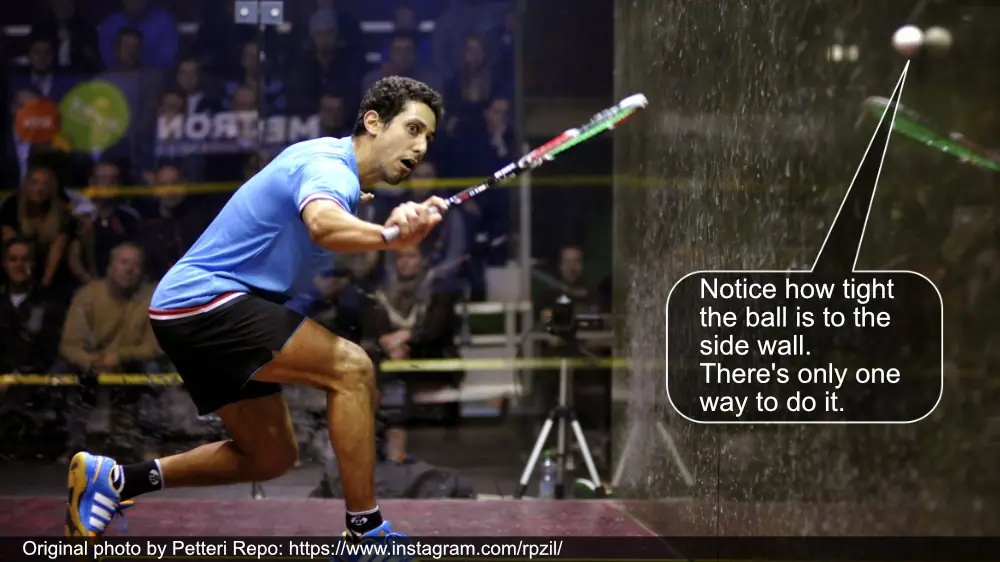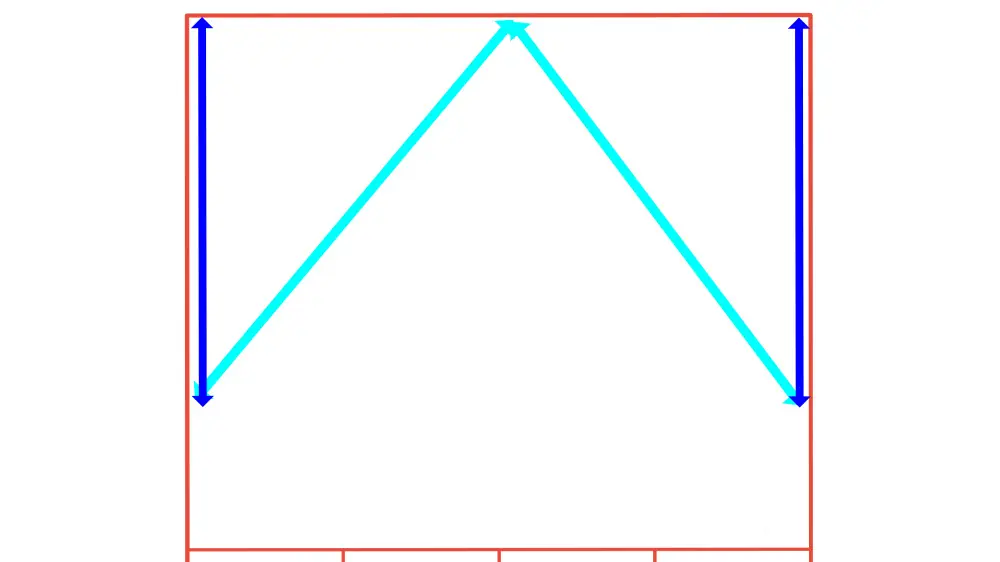08 December 2022 / 4-Min Read / Translate
Squash is geometry. I mean, it’s lots of other things too, but the angles, directions, etc are all simple geometry. On a piece of paper, it’s easy enough to see the angle that each shot will take. It’s very similar to snooker or pool in that regard. occasionally, a ball will take a funny bounce, but in general it’s quite predictable.
That’s the good news. Now for the less-than-good news. You have to calculate those angles in a split-second. Not only that, but you have to consider a bunch of other things at the same time.

Original photo by Petteri Repo: https://www.instagram.com/rpzil/
Read this slowly – it’s important: To hit the ball tight, you need to make contact with it as close to the side wall as possible. Now read it again.
Yes, it’s possible to hit great drives to the back, that have great angles, that make it very hard for your opponent to make a good return, but if you want the ball to stay very close to the wall all the way up and down the side wall, you have to hit it parallel to the side wall. And before you tell me that you once it this weird shot that hit the corner of the front wall and aide wall and the ball came back down the same side wall touching it, yes, that does happen, but unless you you can do it at will, it’s just lucky.
When the ball hits the side wall two main things happen to it. Firstly, the angle changes. From the top down (plan) perspective, that’s easy to know. It will be the same angle that it hits at (unless the wall is very humid and the ball skids). The image below shows two shots: the dark blue and the light blue. Notice how in both cases, the angle the ball hits the front wall in exactly half the width of where the ball comes from and goes to.

The second main thing that happens to the ball is that it slows down. “By how much?” you ask. Well, that depends on the initial speed and the exact angle. It can be hard to guess. It also depends on the condition of the ball, i.e. how new and tacky it is. Those two things mean that the longer you wait to hit the ball after it has hit a side wall, the longer those two effects have to cause you problems.
And that is not even talking about the fact that the ball is probably coming directly towards you, giving you less time and space! ARRRGGGHH!
So here we are. We now know that making contact with the ball as soon after it hits the side wall as possible is the solution, how do we put it into practice? Exactly! Practice. It’s a natural tendency among beginners, improvers, recreational and some club players to avoid the side walls. Your timing is ruined if you are worrying about hitting the side wall with your racket, so the first thing to do is become comfortable with the side wall.
I’ve posted this before, but here is a simple exercise to begin that process:
Next, you need to find a partner and both stand in front of the short line, one player near the right side wall and the other on the other side. Hit the ball straight to yourself and then aim to hit it at the side wall vert near your partner. They have to hit it straight then back to you. Both of you must wait until it has hit the side wall before hitting your straight shot if possible.
You should do this on the bounce first and as you get better move further back towards the back wall, until eventually (over a few weeks practice) you are both standing in the back corners hitting the ball quite hard. Be warned, it's not easy to do. And hitting the crosscourt accurately is not as easy as you might think it is.

When you feel comfortable, do the drill on the volley. The next stage is a condition length-only game where one player can only hit straight and the other straight or crosscourt. This forces the straight-only player to take the ball early after the side wall. Make sure you swap jobs after one game.
This idea is as much a mindset shift as it is about the technical swing of making contact sooner. I won’t tell you it’s easy, because it’s not, especially on service return where the ball is high above your head and/or moving fast, but by focusing on taking the ball early after the side wall, the chances of hitting tight become greater.
Next time you watch pro player, notice how easy they make it look. In fact, I’ll try to make my next OneShot video, one of these shots.